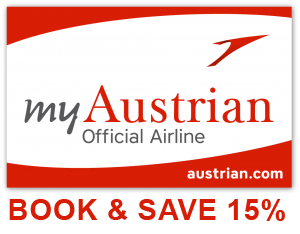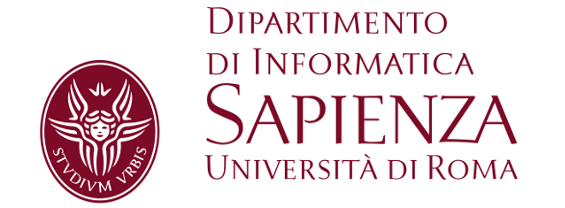Info
Italy (+)
Italy has been, since antiquity, the centre of
history, culture and art. The Italian museums, collections and archaeological
sites reveal countless tokens of the past and the many civilizations
that have passed across this country, evidence of which is still
inextricably woven into the present day landscape.
Artistic wonders can be found everywhere, and every corner of the
country holds countless and wonderful surprises. The Italian artistic
and cultural heritage is one of the most valuable in the world. Italy
has more cultural UNESCO World Heritage Sites than any other country. Rome, Florence,
Assisi, Venice, Siena, Pisa,
and Naples are its most renowned cities
of art, but the whole country can boast towns of breathtaking
beauty, as these numbers demonstrate: 95,000 monumental churches,
40,000 forts and castles, 30,000 historical residences with 4,000
gardens, 36,000 archives and libraries, 20,000 historical cities
and towns, 5,600 museums and archaeological sites, and 1,500 convents.
Tourists can explore and discover the private residences of ancient
and noble families; visit world famous museums such as the Uffizi
Gallery in Florence, the Capitoline Museums in Rome, or the
Brera Art Gallery in Milan; explore impressive archaeological sites,
such as Pompei and Herculaneum, to immerse themselves in an
exciting, grandiose past. That is by no means all - there are numerous
cultural, artistic, and musical events that animate Italian life.
Italy offers a rich combination of masterpieces from different areas, blending landscape and culture, history and art, architecture and city planning - it offers an exciting journey through time, from the Ancient Greeks and Romans to the present day, which is also filled by a wealth of art and culture.
Climate
The climate varies considerably from the north
to the south of Italy.
In the north of the country - the area between the Alps and the
Tuscan-Emilian Apennines - the climate is harsh, with very cold
winters and very hot, particularly humid summers. In central Italy
the climate is milder, with a smaller difference in temperature
between summer and winter and a shorter and less intense cold season
than in the north; summers are longer, but the sultriness of the
northern cities is mitigated by the sea. In southern Italy and the
islands winters are never particularly harsh, and spring and autumn
temperatures are similar to those reached in the summer in other
areas of Italy.
Time Zone, Shop Hours
Italy is in the Central European Time (CET) Zone,
1 hour ahead of Greenwich Mean Time (GMT), and observes Daylight
Saving Time: at the beginning of spring the clocks go forward an
hour in order to take advantage of an extra hour of sunlight in
the late afternoon/evening. At the beginning of autumn the clocks
are shifted back an order to standard Central European Time.
Shop opening hours
Shops generally open at 09:00 in the morning and close at 13:00 hours, then after lunch Shops open again at 15:30 in the afternoon and close at 19:30 from Monday to Saturday.
Currency
Since 2001, the currency used in Italy is the
euro. Bank opening hours are
Monday to Friday 08:30 -13:30 and 15:00 -16:00.
Language
Italian is the official language of the country, although accents
and dialects may vary widely from one region to another. A large
number of local dialects are spoken in Italy.
There are two regions, however, which have a second official language:
the Aosta Valley, where French is also spoken, and Trentino Alto
Adige, where German is also spoken. In these regions, road signs,
as well as place names, for example, appear in both languages. There
are also a number of small areas in which languages other than Italian
are used, although these languages do not have official status:
in Friuli-Venezia Giulia there is a Slovenian-speaking area, and
in Calabria (in the Bovesìa area) and in Apulia (in the Grecia Salentina
zone), Greek is spoken in some areas. In Sicily, in Piana degli
Albanesi, you will find the largest Albanian community in Italy,
where the Albanian language is widely used, even in official documents
and on road signs.
Driving in Italy
Documents required to drive in Italy
Driving licences issued by any of the EU member states are valid
throughout the European Union, including Italy. Drivers in possession
of a licence issued by any EU country do not require an international
driving permit or a sworn translation of their own licence.
Electricity & Water
Electrical system
In Italy the electrical current is 220 volts AC (50 Hz). Electrical
sockets comply with European regulations. In most hotels you will
find adaptors for different types of plugs.
Water
The supply of drinking water is guaranteed throughout Italy. The
water from taps and fountains is checked regularly, and is perfectly
safe to drink, unless there is a notice indicating otherwise.
Rome (+)
Rome, Italy’s capital, is a sprawling, cosmopolitan city with nearly 3,000 years of globally influential art, architecture and culture on display. Ancient ruins such as the Forum and the Colosseum evoke the power of the former Roman Empire. Vatican City, headquarters of the Roman Catholic Church, has St. Peter’s Basilica and the Vatican Museums, which house masterpieces such as Michelangelo’s Sistine Chapel frescoes.
- Founded: April 21, 753 BC
- Area: 1,285 km²
- Weather: 26°C, Wind W at 11 km/h, 55% Humidity
- Population: 2.868 million (2014) United Nations



